ANTIQUE INDIAN SILVER OVAL PLATTER, LARGE SIZE, LUCKNOW, INDIA – LATE 19TH CENTURY
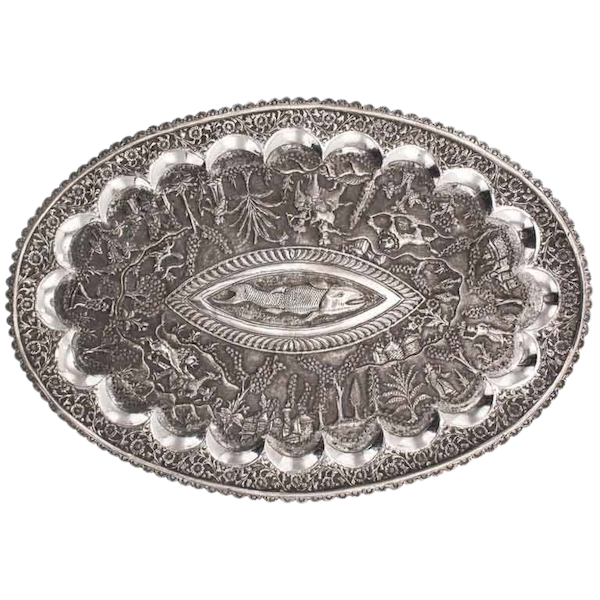
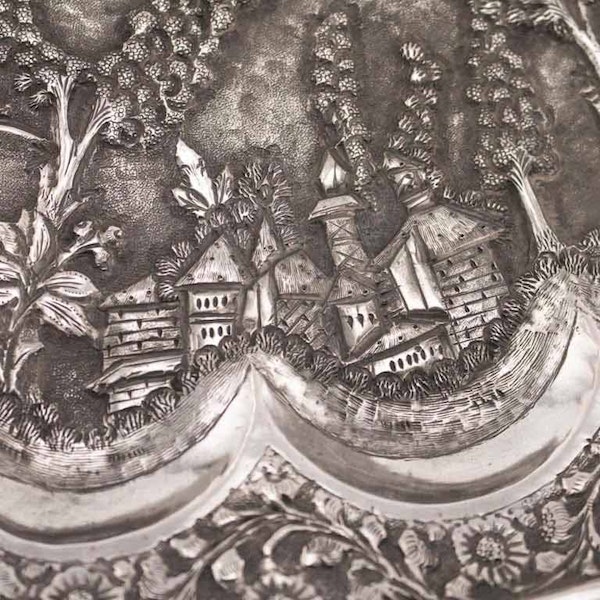
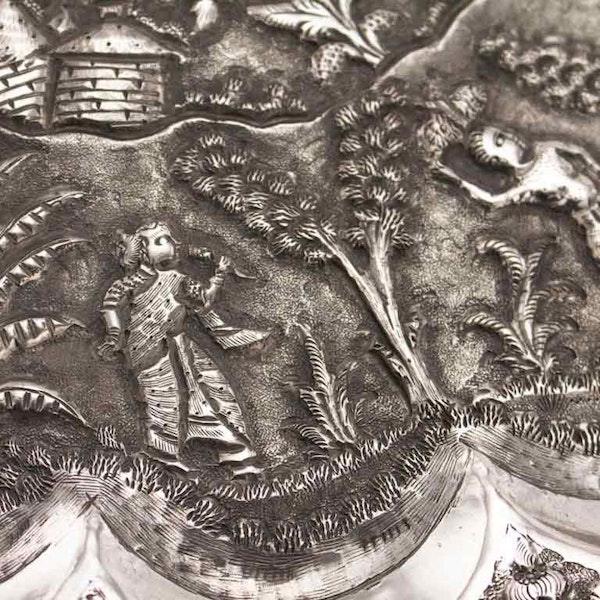
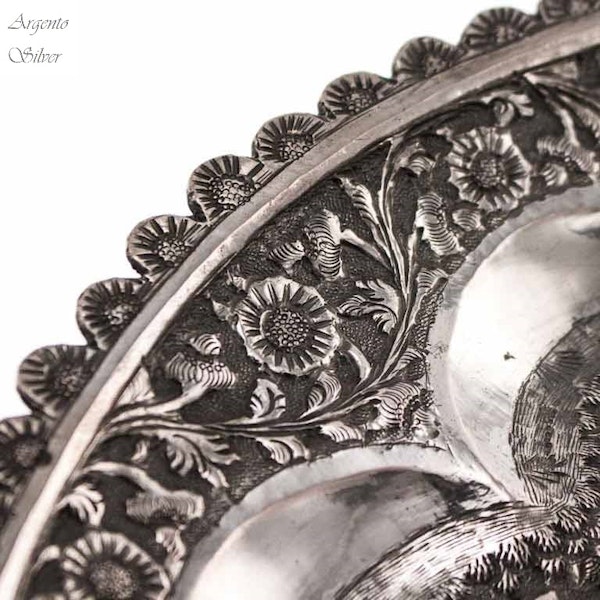
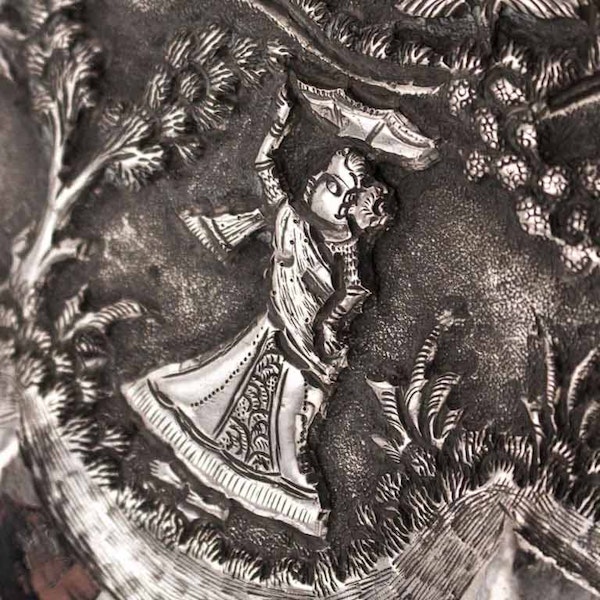
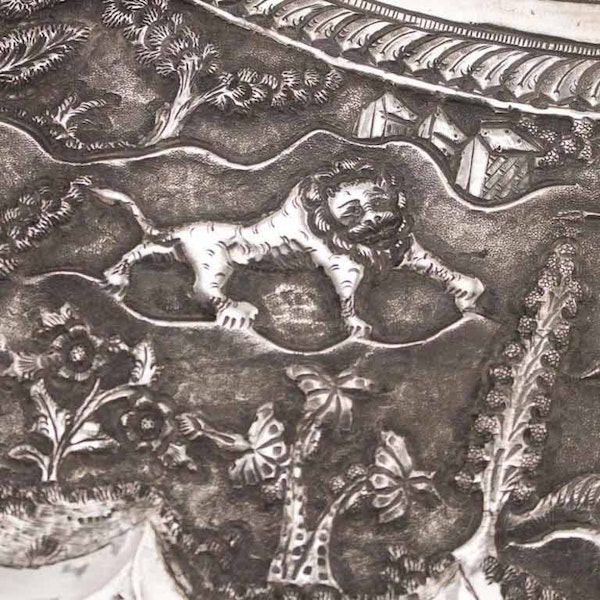
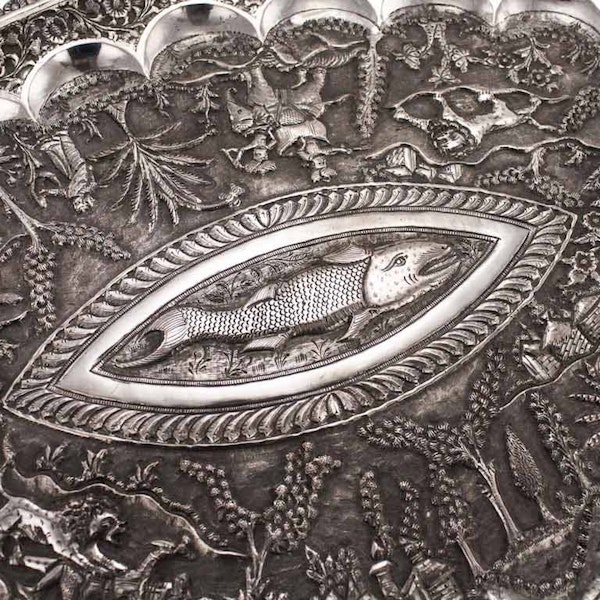







ANTIQUE INDIAN SILVER OVAL PLATTER, LARGE SIZE, LUCKNOW, INDIA – LATE 19TH CENTURY
£2,400.00
Description
A large, charming and interesting Indian silver oval platter with a central boat shaped panel within a gadrooned frame, depicting a fish. The platter is not signed but was made in Lucknow, the capital of Awadh (Oudh). Unusually, elements of the typical Lucknow style have been combined with Kutch style floral decoration and a rural village style more often associated with silver made in Calcutta.
Awadh was a prosperous and fertile kingdom situated between the great Ganges and Yamuna rivers, famed for its mangoes, flowers, herbs and spices, once described as “the garden, granary, and queen-province of India”.
Fish, more usually seen as a stylised pair, often feature in Lucknow silver and were one of the principal design elements of the Royal Coat of Arms of the Kingdom of Awadh. It is unclear why the royal house of the Nawabs of Awadh came to be linked with the fish symbol but Stephen Markel recounts one possible explanation, a local folk legend, which explains the iconography of the central panel:-
Sadaat Khan was appointed Governor of Awadh by Muhammad Shah in 1722 and was returning to Lucknow with his troops in order to quell rebellion in the province and assume control. He was crossing the Ganges in a boat, when, as he reached the midpoint of the river, a fish suddenly leapt out of the water and fell into his lap. “Considering it to be a good omen, he treasured the fish carefully, its skeleton remaining with his descendants till the fall of his dynasty.” The gadroons around the panel containing the fish suggest the wake of a boat as it moves through the water.
The tray has been ornamented in repousse and chased techniques. Floral decoration, typical of the Kutch style, stretches from the decorative scalloped edge to the crisply lobed plain silver cavetto, forming a shining band of crescent moons. The area between the cavetto and the central panel portrays a fertile and beautiful landscape, including many different types of trees, flowers, grasses, hills and rivers with occasional architectural vignettes of substantial buildings and simple huts. People are depicted going about their daily business, quietly tending to their crops or returning from fishing and harvesting.
Hunting scenes were a favourite decorative design and often depicted on Lucknow silver. In the midst of the rural tranquillity a lion hunt is in progress; the hunter is standing in a howdah on top of an elephant with his gun pointed at a lion whilst the mahout sits astride the elephant’s neck, holding a pair of binoculars. Another attendant has already been overcome by a lion and lies prostrate on the ground with his dagger drawn, attempting to defend himself.
Many examples of Lucknow silver decorated with hunt scenes can be found within museums and private collections. They date from the mid 1870s to the early 1900s and the genre was popularised by the eight month tour of India, undertaken in 1875, by Edward, Prince of Wales (who later became King Edward VII). During his tour, the Prince visited many areas and participated in many hunts. Surviving photographs showing him hunting from an elephant, in a similar manner to that portrayed on the platter, are housed within the Royal Collection.
References:-
Markel, Stephen, Luxury Arts of Lucknow, Arts of Asia, 23 ii (1993) pp 108-120
Inventory number 2701993 (and other examples), The Royal Collection, United Kingdom
| item details | |
|---|---|
| Origin | Asian |
| Period | 19th Century |
| Condition | Excellent |
| Dimensions | Width: 47.5cms, depth: 32.5 cms |
| Diameter | Weight: 722 grams |
Product REF: 10088
